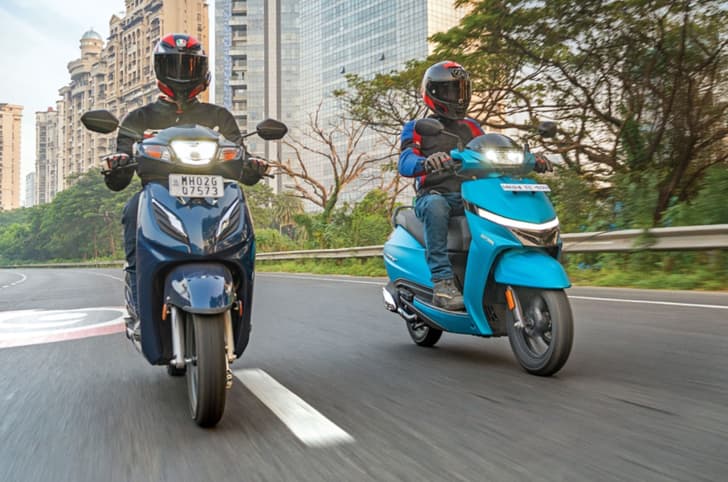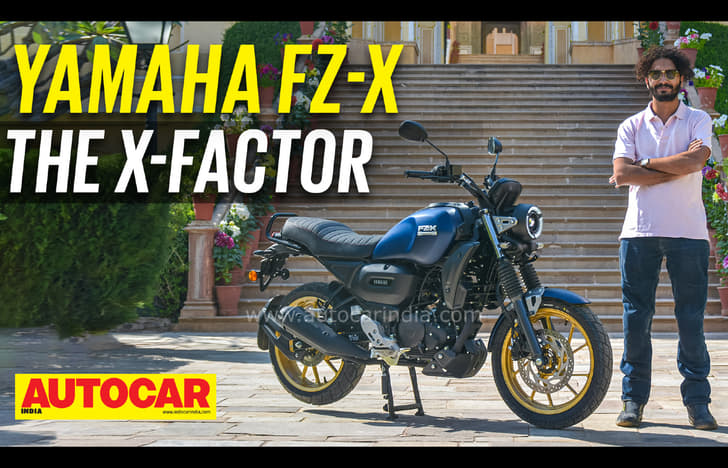It’s quite clear from just the design and specs that the TVS Ronin was specifically created to take a bite out of Royal Enfield’s pie. But I bet TVS never imagined that Royal Enfield would price the new Hunter this low. In fact, in this colour scheme, the Hunter 350 costs Rs 4,000 less than the top-spec Ronin we have here and both top-spec models otherwise cost an identical Rs 1.69 lakh (ex-showroom). This is going to be an interesting story.
EASY ON THE EYE
When it comes to a simple, straightforward design, the Hunter is nicer on the eyes, with a better sense of proportion and no few fussy or strange-looking design details. The Ronin, meanwhile, catches your attention with its funky LED headlamp and its gold USD fork, but the main thing you’ll notice when you look at both bikes together is that the Ronin definitely appears to be the larger bike.
That’s primarily down to the Ronin’s taller, wider and unusually shaped fuel tank. Its thicker upside-down front suspension fork and wider seat also help. In comparison, the Hunter is lower and slimmer and its more petite dimensions will certainly appeal to newer, less confident or smaller riders – although existing RE fans certainly won’t care for it.

While the Ronin appears larger, it also has some strange design touches, like the huge chain cover which is trying to look like a belt-drive system on a cruiser motorcycle. Look at it through the other side of the wheel and you’ll see just how unnecessarily large it is. The Ronin also has no real off-road abilities, but it still comes with blocky pattern TVS Rambler tyres. On the other hand, the Ronin also has some nice things like the adjustable levers, the stylish mirrors, funky LED indicators and the cool-looking LED strip brake lamp.
While the Hunter is quite small by RE standards, the bike will fit most riders well and I find the riding position easy to get along with. It’s definitely a more sporty riding position, with mildly rear-set pegs and a slight lean down to the handlebar.
In comparison, it’s actually the Ronin that seats you like you would expect an RE to. It feels a lot like a Classic 350 in the way your feet are forward set and you sit fully upright. The Ronin’s seat is also wider and softer, and overall, this bike has a more comfortable riding position.
CHILDREN OF THE CITY
Both motorcycles here are designed to excel within urban confines and they have engines that strive to offer generous amounts of low-end performance. .
The TVS gets a brand-new, 225.9cc, four-valve, oil-cooled engine that produces around 20hp and 20Nm of torque. The main figure to note is that the Ronin produces its peak torque at just 3,750rpm, which is even lower than the Enfield.
Meanwhile, the Hunter uses the same 350cc engine as the Classic and the Meteor, with the same gearing and power figures.
It is tuned slightly differently though and produces a slightly more raspy sound out of its shorter exhaust pipe. Power-wise, the Hunter is almost exactly the same as the Ronin, but the larger engine is able to produce a much bigger torque figure.
There are similarities in the power delivery, but the big differences come in how the engines sound and feel. The Ronin has a smooth revving motor with a peppy exhaust sound and it’s very much what you would expect from a TVS engine. The RE motor feels very different, with a slow, thumpy beat at low revs, although it smooths out as the RPMs go up. In fact, at higher RPMs, the Enfield engine actually produces less vibration than the TVS. When it comes to the 5-speed gearboxes, once again, the RE has the crisper, more precise shifts.
The TVS engine is short-geared and you can almost always carry one or two gears higher than the Hunter, but it sounds and feels like it’s revving quite high once you cross 80kph. While neither of these bikes are really meant for high speeds, the Hunter feels more relaxed at a 90-100kph cruise.
We put both motorcycles through our comprehensive testing procedure, where it turns out that the Ronin is the quicker bike in every measurable parameter, but the differences are not big.
As for fuel efficiency, the short-geared Ronin beats the Hunter in the city (32.31kpl vs 30.61kpl), but the latter has the advantage on the highway (36.62kpl vs 39.84kpl). Those figures are decent, but we did expect a bit more from the lighter Ronin with its smaller engine.
While there isn’t that much of a gap in outright performance or even efficiency, one thing that puts us off the Hunter is its heavy clutch. Now, this is something that RE customers would expect or accept with a Classic or a Meteor, but the Hunter is aimed at newer riders and people buying their first Enfield, and I’m not sure how they’re going to accept this – it can get painful if you’re stuck in a traffic jam.
EASY RIDERS
The Ronin, meanwhile, has an extremely light clutch action and comes with a slip/assist clutch. Speaking of light, the Ronin also weighs nearly 20kg less than the Hunter, despite the fact that the latter is currently the lightest RE you can buy. You feel the difference for sure, but to be fair, the Hunter is agile, light steering and easy to ride. Both bikes have sub-800mm seat heights, which also helps. Weight is not something to really be concerned with here, but there is another issue we have with the Hunter – its suspension.
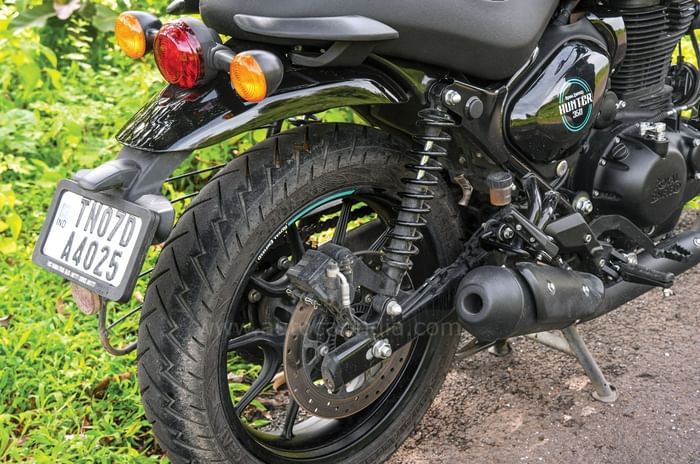
The front fork is quite soft and it’s actually rather underdamped on the rebound stroke, but the twin rear shocks are unforgivingly firm – and they come set on minimum preload from the factory. If you live in an area with bad roads, this can get unpleasant, especially for lighter riders. In comparison, the Ronin’s 41mm USD fork/monoshock set-up feels supple and plush.
A lot of folks expressed concern online about the Hunter’s 150mm ground clearance, but we haven’t faced that issue so far, even with the weight of a pillion – that’s probably one area where the hard shocks are a benefit. Speaking of, neither bike has excellent pillion comfort, but the Ronin’s seat, grab rail and foot peg placement are a little better than the Hunter’s.
As for handling, the Hunter is definitely the more fun and connected machine. In comparison, the TVS feels light and easy, but its raked-out front end isn’t as communicative and the foot pegs can scrape more easily. As for brakes, both are just about adequate in terms of power and feel, although the actual braking distances in our tests were nearly identical.
VALUE CHAIN
And finally, we move on to the area of features, where, as you would expect, the TVS absolutely takes the win. The Hunter comes equipped with a neatly designed USB port as standard and you get dual-channel ABS on the top models of both these bikes. You can also option RE’s tripper navigation display as an extra, along with a number of other well-designed accessories.
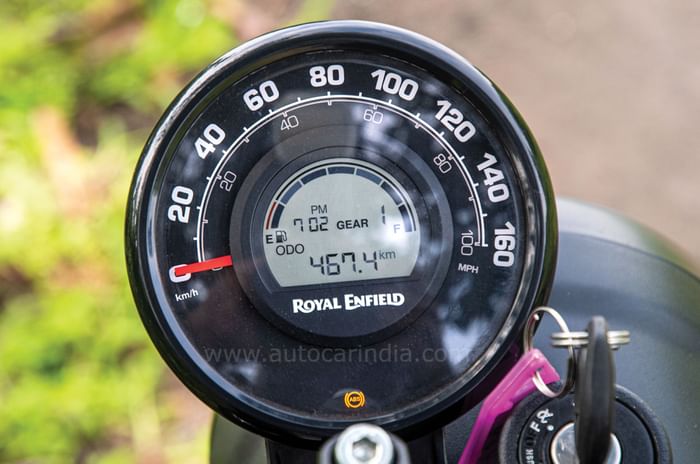
However, the TVS has much more to offer as standard, including its LED headlamp, more detailed digital instrument console, two ABS modes and a whole bunch of features enabled via Bluetooth connectivity and a dedicated mobile app.
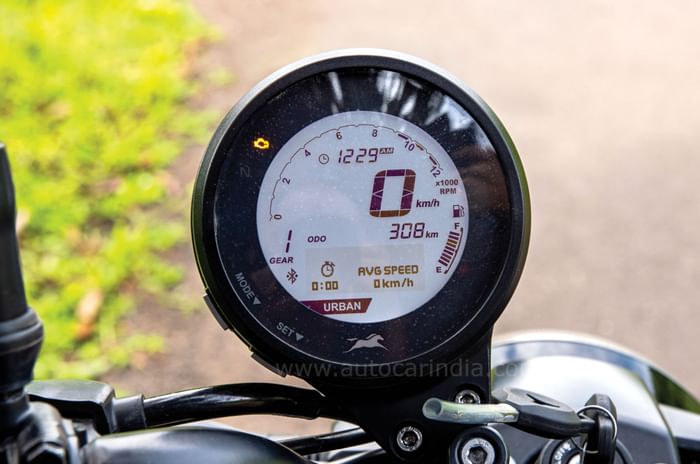
On top of that, there’s also the slip/assist clutch and TVS’ Glide Through Technology, which allows the bike to gently creep forward in slow moving traffic without any throttle input. All of this comes together to make the Ronin a much easier and nicer bike to ride within the city.
As for the Hunter, it seemingly has a lot of positives and only two real issues going against it. Unfortunately, both are impossible to ignore because you have to constantly deal with them – and there isn’t any easy or cheap fix.
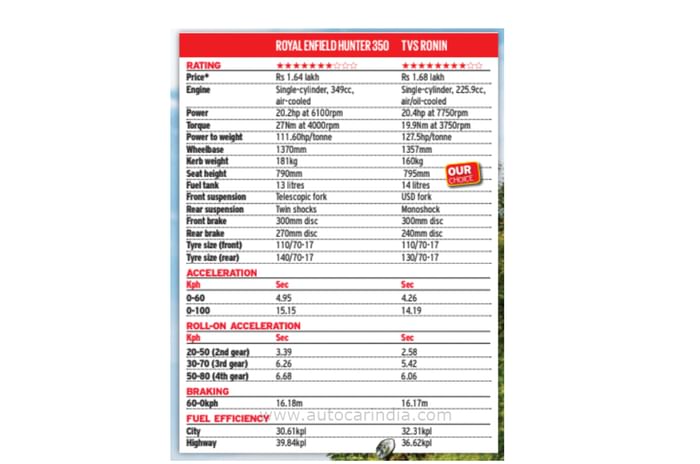
I do like the Hunter quite a bit, I think it has a much more characterful engine and I think it looks better as well. There’s also no doubt that there’s much more pride of ownership associated with the RE badge. However, there’s just no getting around the fact that the Ronin is the better value for money deal, and it is the nicer bike to ride in our conditions. To us, it’s the better bike here.







